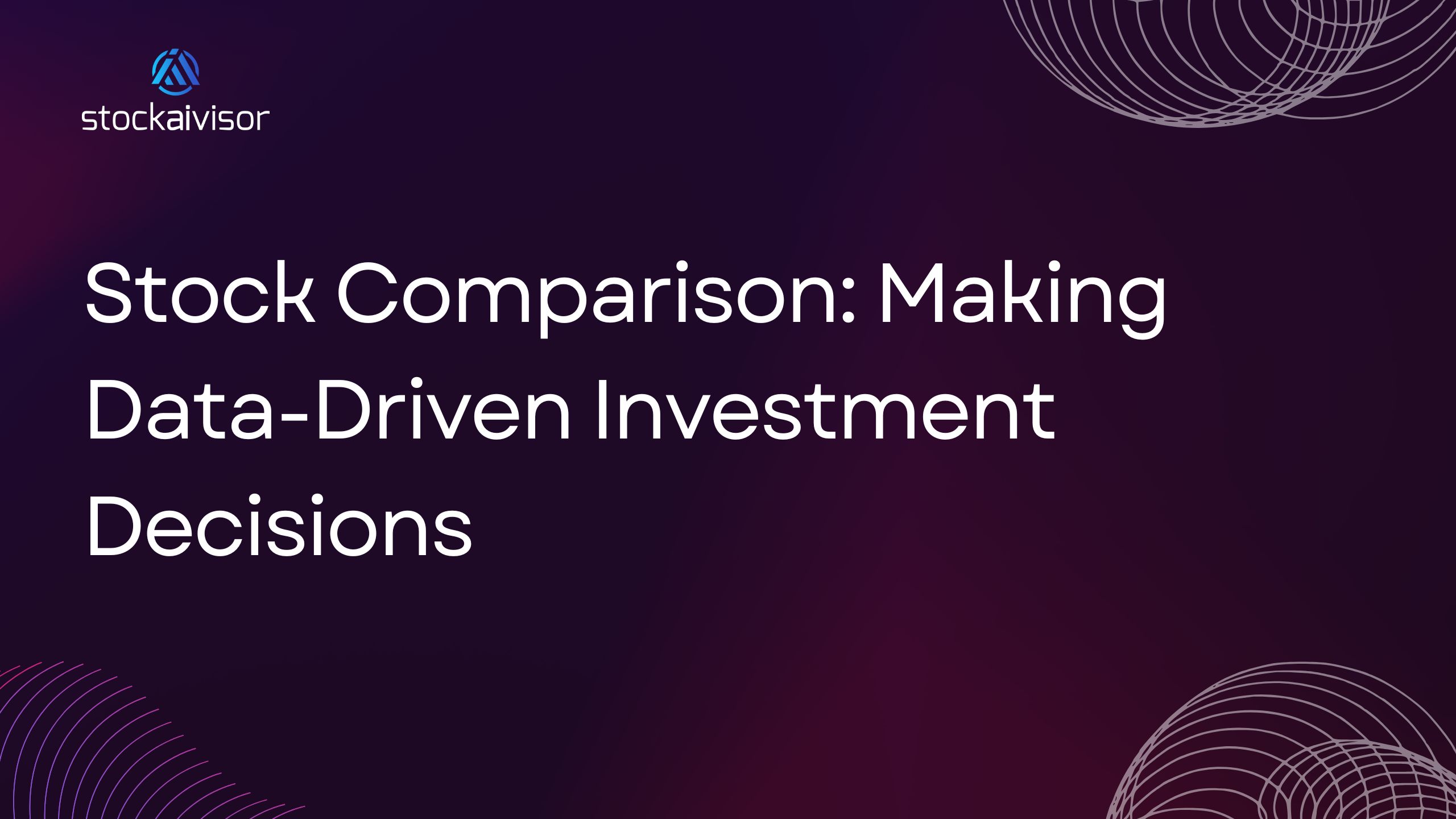
Stock Comparison: Making Data-Driven Investment Decisions
Stock Comparison
Imagine you are evaluating two promising stocks. One has delivered impressive returns, but at the cost of wild swings in volatility. The other has steadier growth, yet its fundamental ratios raise questions. Which one is the better investment?
This is where Stockaivisor’s Stock Comparison tool changes the game. Instead of relying on single-point metrics or gut feelings, Stockaivisor breaks down stock performance, comparing it across rolling returns, risk-adjusted ratios, drawdowns, technical indicators, and financial ratios.
How Stockaivisor’s Stock Comparison Tool Works
Stockaivisor’s Stock Comparison tool provides a detailed comparison of multiple stocks using key financial metrics. This feature helps investors evaluate stocks across different dimensions, including rolling returns, risk-adjusted ratios, drawdowns, technical indicators, and financial ratios to make data-driven decisions.
Now, let’s explore how Stockaivisor’s Stock Comparison tool provides a clear, detailed view of stock performance across multiple dimensions. To do that, I will use tech companies like Apple, Nvidia, Google, Microsoft, and Intel.
Return Analysis: Evaluating Stock Performance Over Time
I get started with return analysis. This return comparison graph shows the fluctuating performance of major tech stocks over time.
Key observations are listed here:
- Nvidia exhibits the highest volatility, with frequent sharp spikes and dips, suggesting higher potential returns but also greater risk.
- Other stocks show more stable rolling returns, moving closely together, indicating similar performance trends with lower volatility.
- Significant dips in recent years, especially in Nvidia, suggest major drawdowns or corrections, highlighting its sensitivity to market cycles.
- Overall, the trend remains cyclical, reinforcing that different stocks react uniquely to macroeconomic events and market conditions.
Risk-Adjusted Ratios: Measuring Returns Relative to Risk
There are many risk-adjusted ratios in this section. Of them, the Sharpe ratio analysis compares the risk-adjusted returns of major tech stocks over time.
Key takeaways:
- Highly volatile Sharpe ratios indicate periods where excess returns varied significantly relative to risk.
- Frequent spikes and drops suggest changing market conditions and investor sentiment.
- Nvidia appears to have the widest fluctuations, implying periods of both high risk-adjusted gains and sharp losses.
- More stable stocks maintain relatively consistent Sharpe ratios, suggesting steadier returns per unit of risk.
- Sharp negative spikes reflect extreme drawdowns or periods where risk far exceeded returns.
Volatility Indicators: Understanding Stock Price Fluctuations
Next comes the technical indicators. To save space, I just focus on volatility indicators. This volatility analysis compares multiple stocks using key technical indicators: ATR (Average True Range), Standard Deviation, and Bollinger Bands.
Key insights:
- Nvidia shows the highest volatility, with significantly elevated ATR and standard deviation values, indicating larger price swings.
- Apple and Google exhibit moderate volatility, with relatively stable but noticeable fluctuations over time.
- Microsoft has the lowest volatility, suggesting more consistent price movements with fewer extreme fluctuations.
- Bollinger Bands maintain a steady width, indicating stable market conditions without extreme breakout events.
Financial Ratio Analysis: Assessing Company Fundamentals
In the last part, you can find the financial ratio analysis. Again, this is just a small portion of the entire financial ratio analysis.
- Asset Turnover Ratio: Google has the highest asset turnover ratio (~0.21), indicating it generates more revenue per unit of assets compared to Microsoft and Intel. Intel has the lowest efficiency in utilizing assets (~0.07).
- Cash Ratio: All companies have a cash ratio of 0, meaning they do not hold enough cash to cover short-term liabilities solely with cash reserves. This suggests reliance on other current assets.
- Current Ratio: Google maintains the highest liquidity (~1.83), followed by Microsoft (~1.35) and Intel (~1.32). A higher current ratio indicates better short-term financial health, ensuring obligations can be met without liquidity concerns.
For a more in-depth financial ratio analysis, visit: Stockaivisor’s Stock Comparison Tool.
Stockaivisor’s Stock Comparison tool empowers investors with a data-driven approach to evaluating stocks across multiple dimensions. Analyzing rolling returns, risk-adjusted ratios, volatility indicators, and financial ratios provides a comprehensive view of stock performance beyond simple price movements. The insights from this analysis reveal key trade-offs—stocks like Nvidia offer high returns but come with significant volatility, while companies like Microsoft show stability at the cost of lower fluctuations.
FAQs
1. What is Stockaivisor’s Stock Comparison tool?
Stockaivisor’s Stock Comparison tool helps investors evaluate stocks using key financial metrics like returns, risk, volatility, and ratios.
2. How does the tool help in making investment decisions?
It provides a data-driven analysis of stocks, highlighting trade-offs in returns, risk, and stability to aid in better decision-making.
3. Can I compare multiple stocks at once?
Yes, the tool allows you to compare multiple stocks side by side across different financial and technical indicators.
4. Is the Stock Comparison tool useful for long-term investors?
Absolutely! It offers insights into stock stability, risk-adjusted performance, and fundamental strength for long-term planning.
